PREVIOUS
SDG Goal wise programs of India (SDG 7) – Part 21
SDG Goal wise programs of India (SDG 7) – Part 21
(இதன் தமிழ் வடிவத்திற்கு இங்கே சொடுக்கவும்)
GOAL 7: Affordable and clean energy
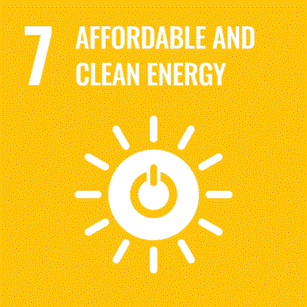
Saubhagya Scheme (Pradhan Mantri Sahaj Bijli Har Ghar Yojana)
Launched Year:
- October 2017.
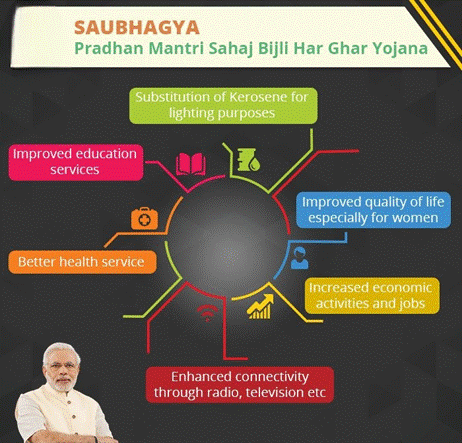
Ministry/Nodal Agency:
- Ministry of Power; Rural Electrification Corporation (REC) as the nodal agency.
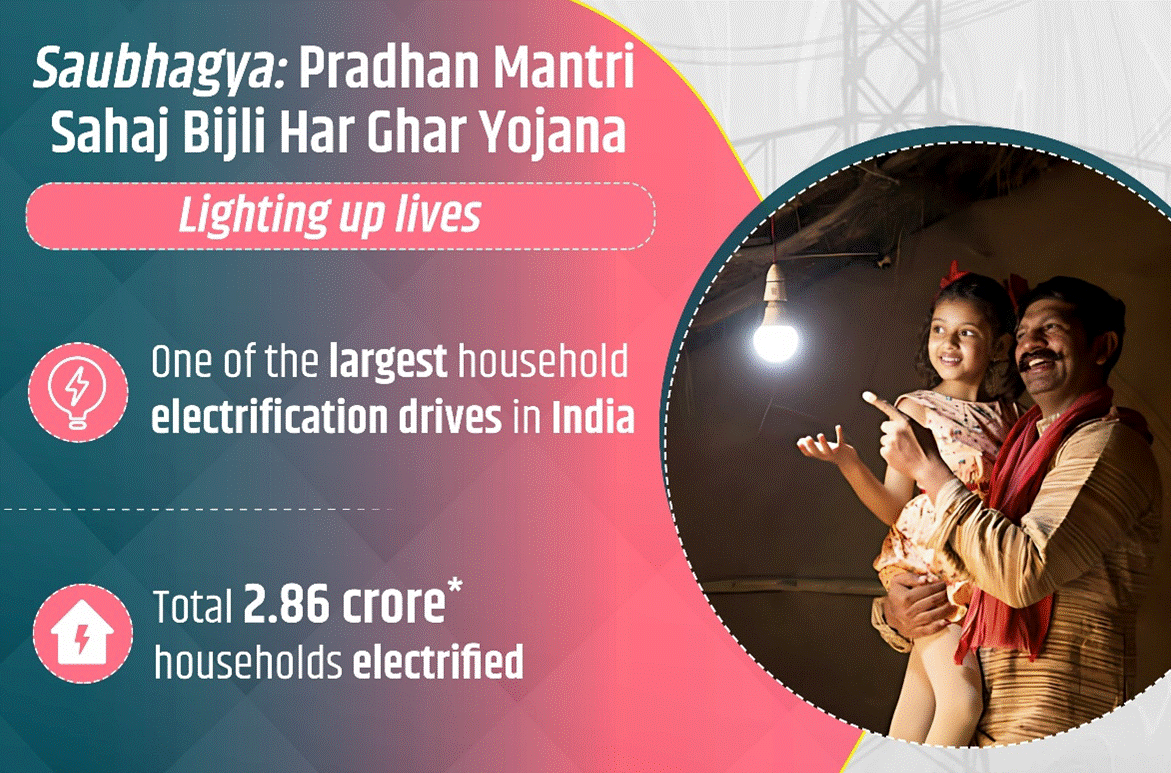
Objectives:
- Provide last-mile connectivity and electricity connections to all un-electrified households in rural areas.
- Extend electricity connections to economically poor un-electrified households in urban areas (non-poor urban households are excluded).
- Implement Solar Photovoltaic (SPV)-based standalone systems for un-electrified households in remote and inaccessible villages where grid extension is not feasible or cost-effective.
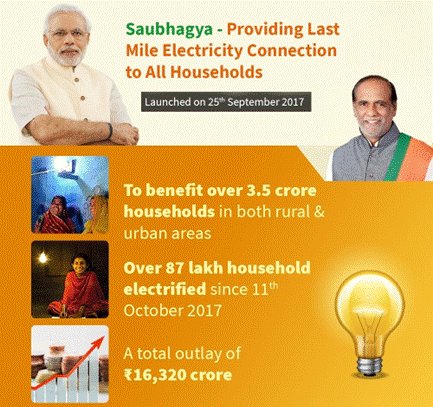
Beneficiaries:
- Rural households (especially BPL - Below Poverty Line) and economically poor urban households.
- Un-electrified households in remote or inaccessible areas where grid connectivity is not possible.
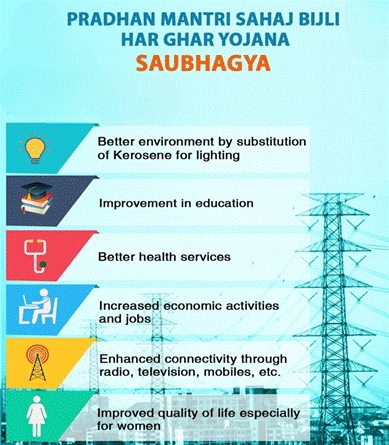
Eligibility Criteria:
- The scheme is targeted at BPL families in both rural and urban areas.
- The beneficiaries are identified through Socio Economic and Caste Census (SECC) 2011 data.
- Rural families other than BPL can get electricity connections for Rs. 500, to be paid in 10 equal instalments.
- Urban BPL families receive free connections.
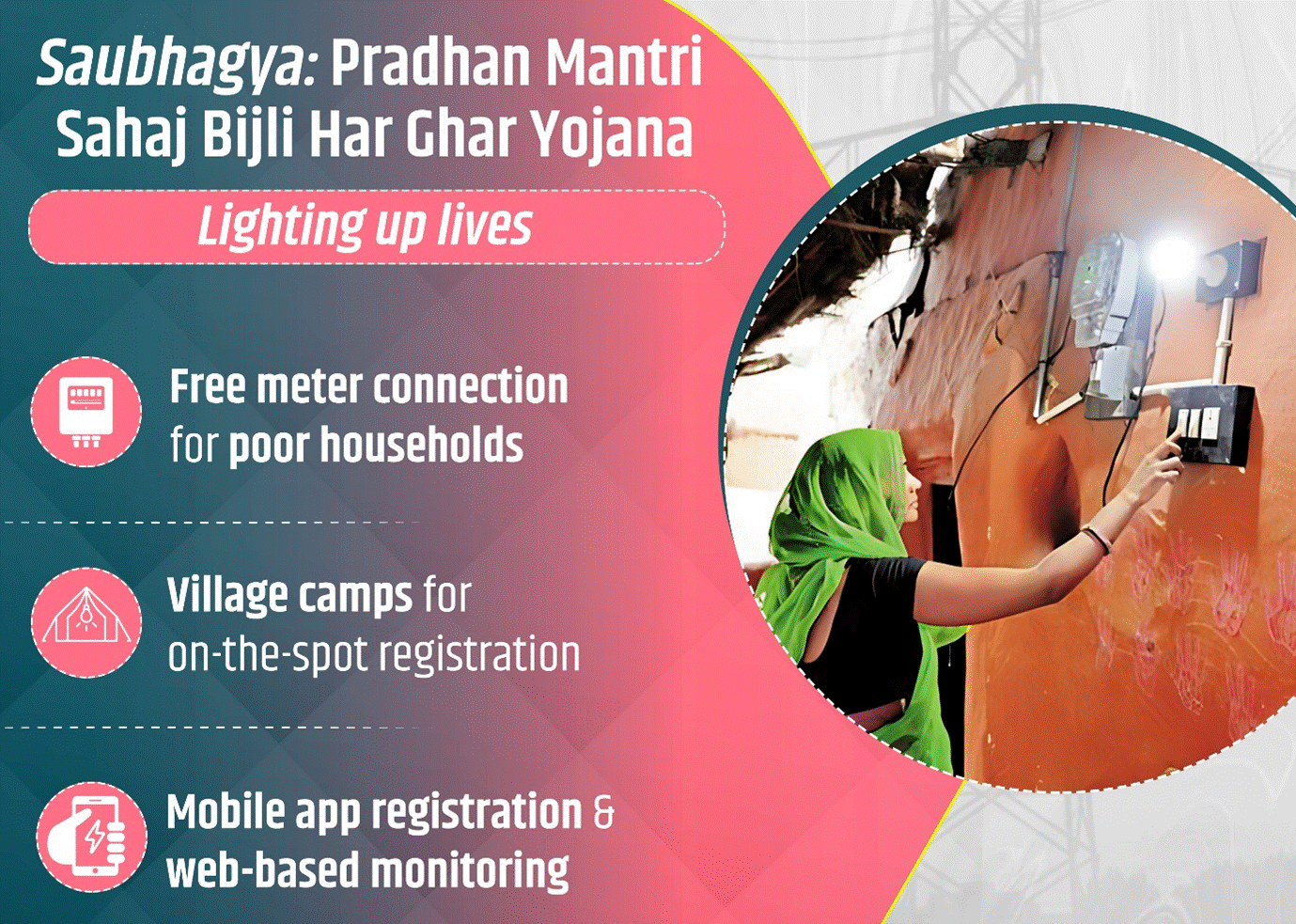
Benefits:
- Free electricity connections for economically poor households.
- Solar-powered systems for remote areas.
- Simplified registration through mobile apps and camps in villages for on-the-spot identification of beneficiaries.
- Near real-time monitoring of the scheme's progress.
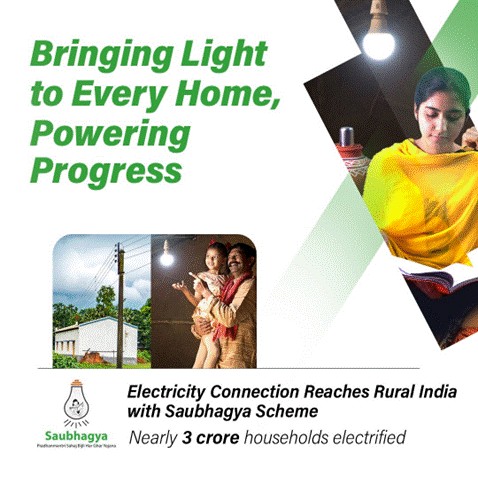
Additional Information:
- In some states, additional time was granted to electrify households that previously declined or were unwilling to connect to the grid.
- The scheme is a collaborative effort between the central and state governments and is aligned with the Deen Dayal Upadhyaya Gram Jyoti Yojana (DDUGJY).
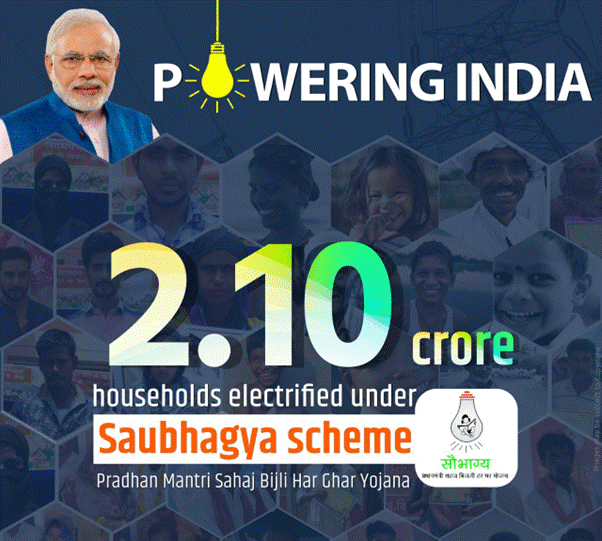
Pradhan Mantri Ujjwala Yojana (PMUY)
Launched Year:
- May 1, 2016.
Ministry/Nodal Agency:
- Ministry of Petroleum and Natural Gas.
Objectives:
- Health Improvement: To reduce the health hazards caused by indoor air pollution from traditional cooking methods (such as firewood, coal, and cow-dung cakes).
- Empowerment of Women: To empower the women by providing access to clean cooking fuel (LPG), which enhances their health and reduces the time spent on collecting firewood.
- Environmental Sustainability: To promote the use of cleaner fuels like LPG, reducing the deforestation and carbon emissions.
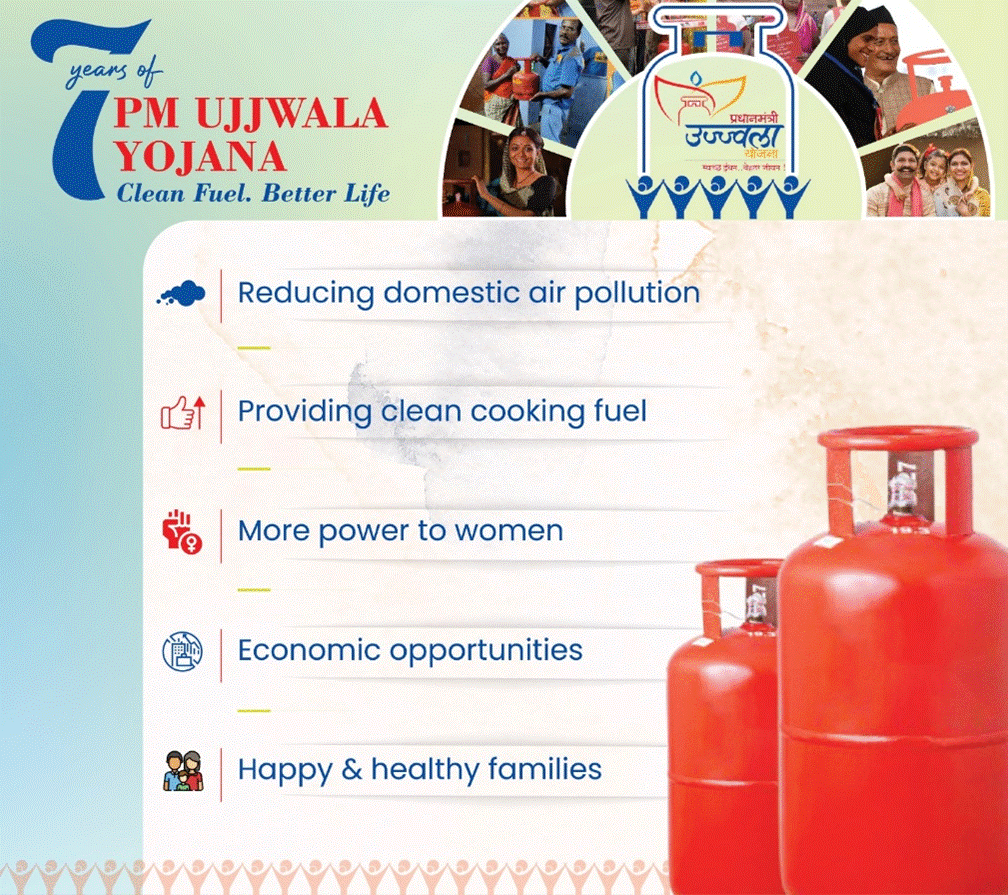
Beneficiaries:
- Rural and deprived households, especially those below the poverty line (BPL), primarily targeting women in these households.
- Households that currently use traditional cooking fuels, such as firewood, coal, and cow-dung cakes.
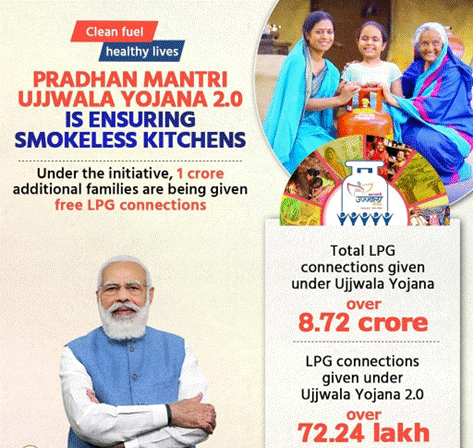
Eligibility Criteria:
- The LPG connection is provided to a woman from a BPL family.
- The beneficiary must be identified through the Socio-Economic Caste Census (SECC) 2011 data.
- Applicants must not have any existing LPG connection in the household.
Women from various disadvantaged categories, such as:
- Pradhan Mantri Awas Yojana (Gramin).
- Most Backward Classes.
- Antyodaya Anna Yojana (AAY).
- SC/ST households.
- Forest dwellers, island residents, etc.
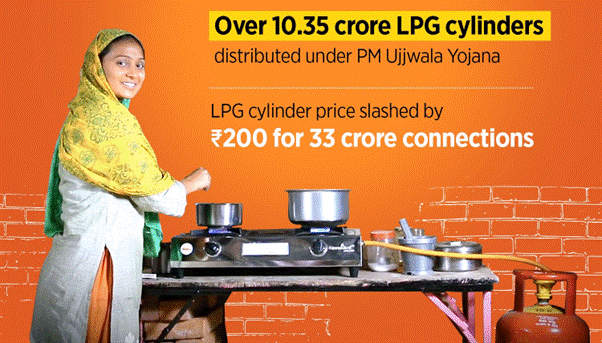
Benefits:
- Free LPG Connections: Eligible beneficiaries receive a free LPG connection.
- Financial Support: ₹1,600 for each LPG connection to BPL households.
- First Refill and Stove: Ujjwala 2.0 offers the first refill and a stove free of cost.
- Subsidy on Refills: Subsidy on the first six refills of a 14.2 kg cylinder or eight refills of a 5 kg cylinder.
- EMI Facility: Beneficiaries can avail an EMI facility to cover the cost of the stove and the first refill.
- PAHAL Scheme: Beneficiaries can join the PAHAL scheme to receive direct subsidies in their bank accounts.
- Health Benefits: Reduces indoor air pollution, significantly improving the health of women and children by preventing respiratory illnesses.
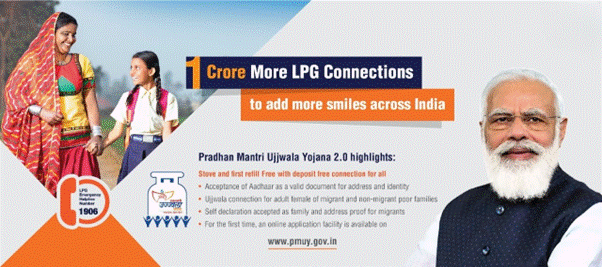
Additional Information:
Phases:
- Phase 1: Launched in 2016 with the target of providing 8 crore LPG connections by March 2020.
- This raised LPG coverage from 62% in 2016 to 99.8% by April 2021.
- Ujjwala 2.0: Launched in 2021, aimed to provide an additional 1 crore connections by March 2022, and later extended to 1.6 crore connections by December 2022.
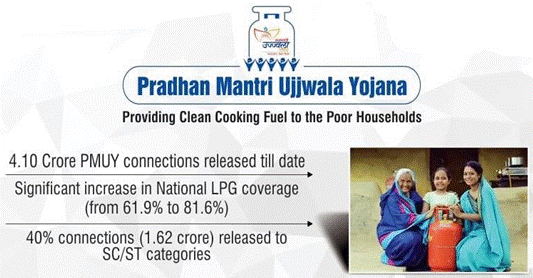
UJALA Scheme
Launched Year:
- 1st May 2015.
Ministry or Nodal Agency:
- Ministry of Power.
- Implementing Agency: Energy Efficiency Services Limited (EESL).
Objectives:
- To promote the energy efficiency and reduce electricity consumption through the widespread distribution of energy-efficient LED bulbs.
- To increase awareness of energy-efficient lighting.
- To reduce electricity bills by providing affordable LED bulbs that consume less power compared to traditional incandescent bulbs.
- To contribute to environmental preservation by reducing energy consumption and CO2 emissions.
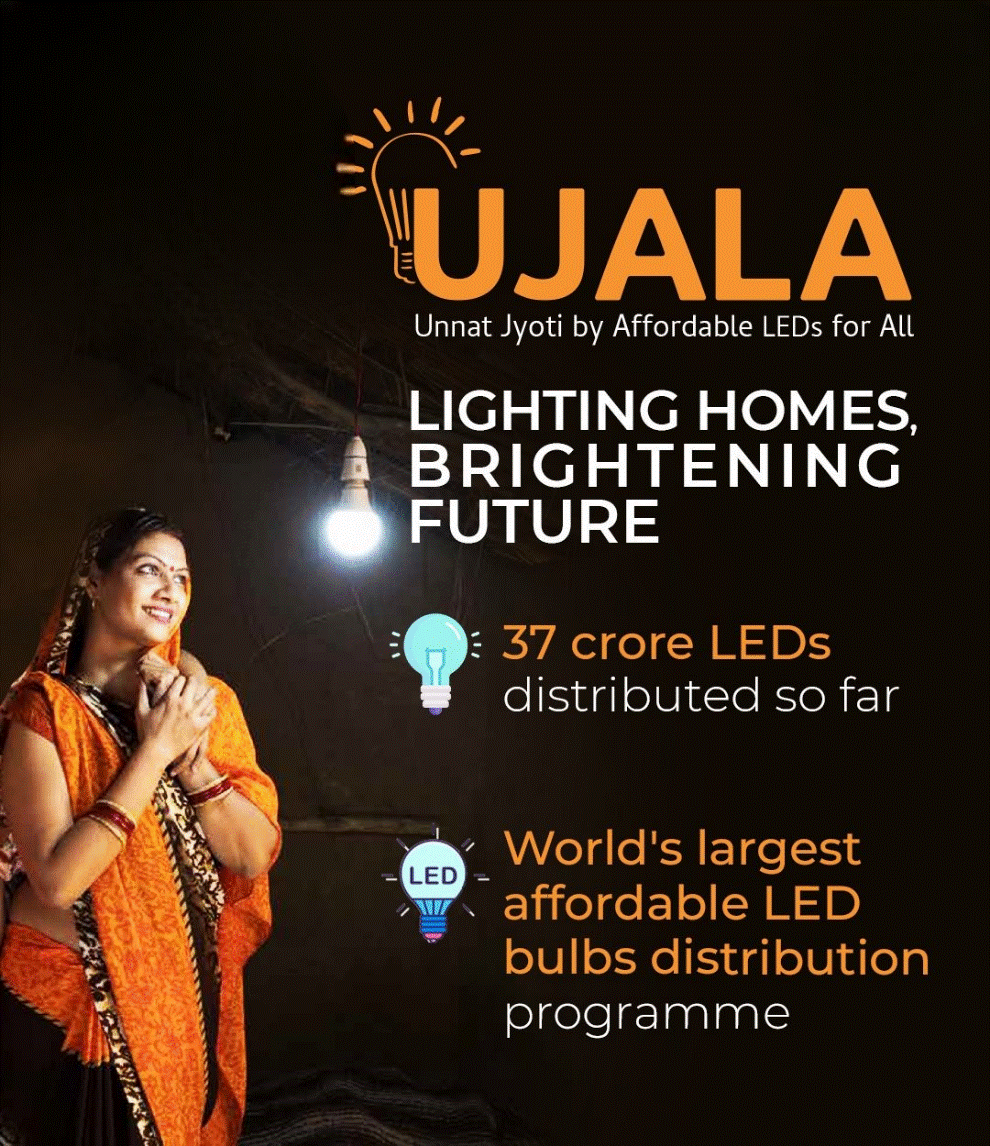
Beneficiaries:
- All domestic households in India with a metered connection from their respective Electricity Distribution Companies.
- Rural and urban households across the country.
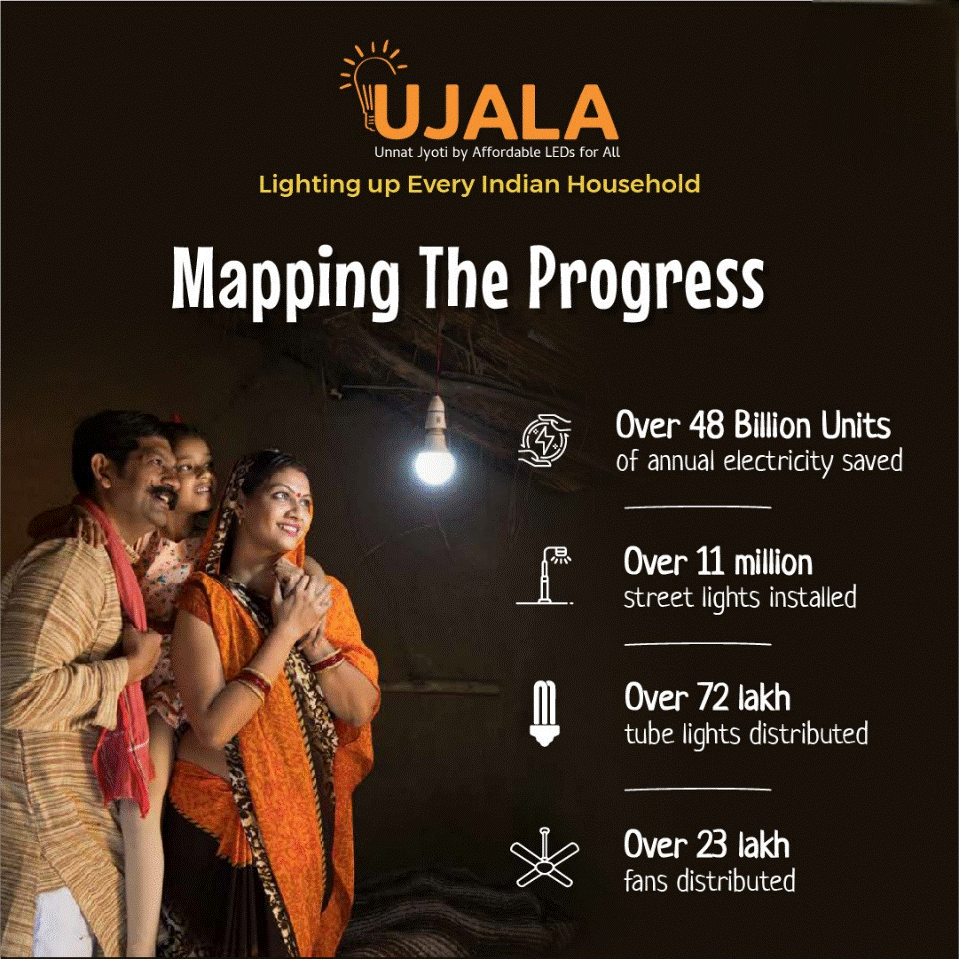
Eligibility Criteria:
- Households with a metered electricity connection.
- No specific income criteria; however, rural households are prioritized for affordable access.
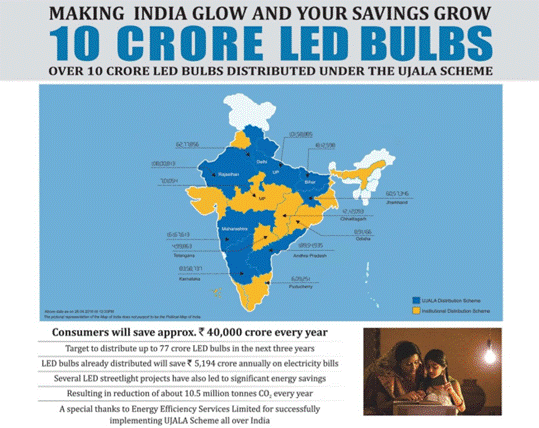
Benefits:
- Affordable LED Bulbs: LEDs are made available at subsidized prices (Rs. 70-80 per bulb, compared to the market price of Rs. 300-350).
- Energy Savings: LED bulbs consume less energy, leading to reduced electricity bills.
- Environmental Benefits: Significant reduction in CO2 emissions (3.86 crore tonnes) due to the widespread adoption of LED lighting.
- Improved Lighting: LEDs offer better and more efficient lighting compared to traditional bulbs.
- Promotes Domestic Manufacturing: Supports the "Make in India" initiative by increasing the domestic production of LED bulbs.
- Massive Energy Savings: Approx. 47,778 million kWh energy saved annually.
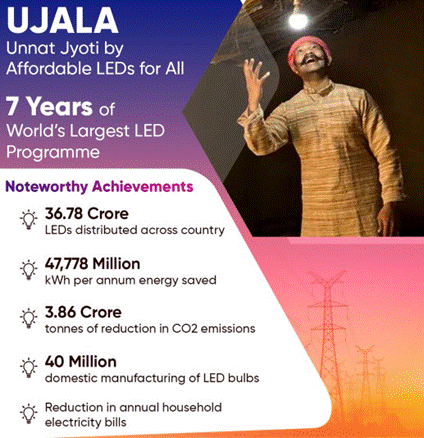
Additional Information:
- The UJALA Scheme is the world's largest zero-subsidy domestic lighting program.
- Street Lighting National Programme (SLNP) is another initiative under UJALA, replacing street lights with energy-efficient LED lights across India.
- The GRAM UJALA Scheme, launched in March 2021, targets rural households, by providing them with affordable LED bulbs at Rs. 10 each in exchange for working incandescent bulbs.
- The scheme has led to substantial energy savings and a reduction in greenhouse gas emissions.
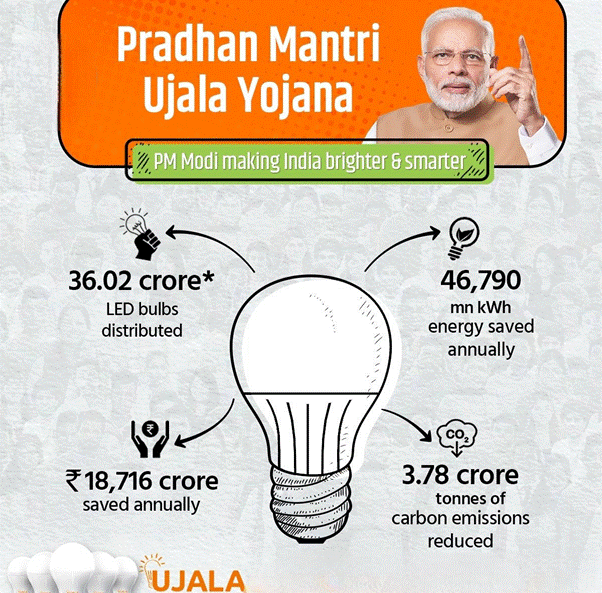
Pradhan Mantri Kisan Urja Suraksha evam Utthaan Mahabhiyan (PM KUSUM) Scheme
Launched Year:
- 2019 (Extended until March 31, 2026).
Ministry or Nodal Agency:
- Ministry of New and Renewable Energy (MNRE).
Objectives:
- Solar Pump Installation: To facilitate the installation of off-grid solar-powered agricultural pumps, reducing dependence on diesel pumps.
- Solarization of Existing Pumps: To solarize existing grid-connected agricultural pumps.
- Solar Power Plants on Barren Land: To set up solar power plants on barren or fallow lands, allowing farmers to sell surplus electricity to the grid.
- Promote Clean and Renewable Energy: To increase the share of renewable energy, contributing to energy security and sustainability in rural areas.
- Enhance Farmer Income: By providing financial support for solar pump installation and solar power generation, farmers can reduce costs and earn from surplus energy.
- De-dieselization of Agriculture: To reduce the use of diesel pumps and promote renewable energy in agriculture.
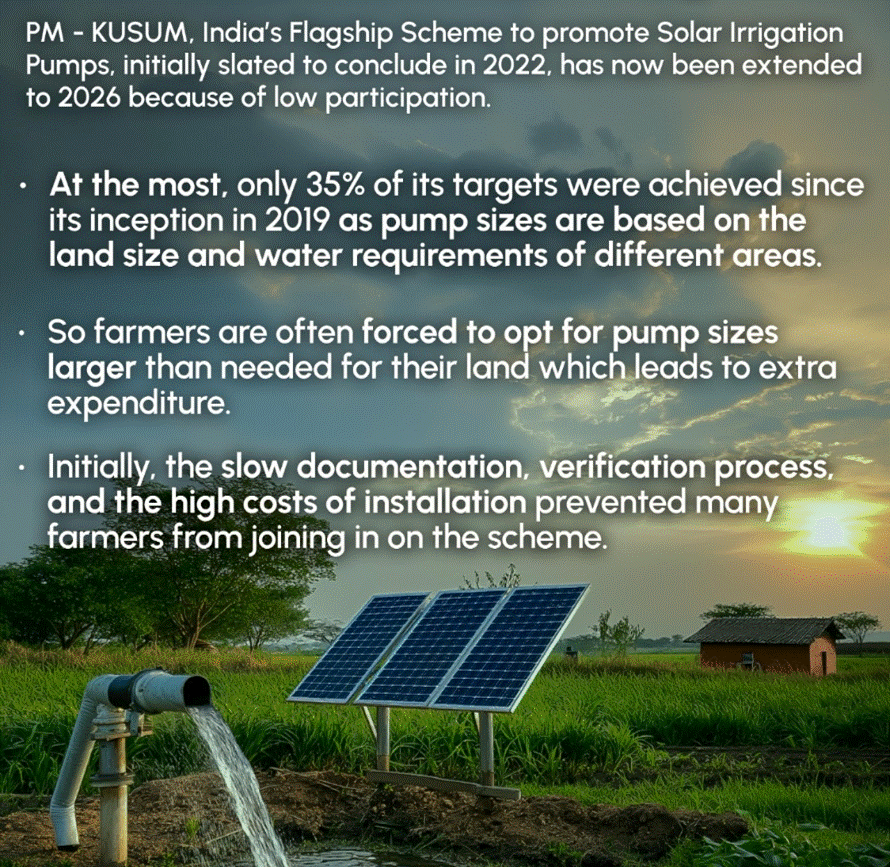
Beneficiaries:
- Individual Farmers: Farmers with agricultural land.
- Cooperatives and Community-Based Organizations: These can also apply for solar pump installations and solarization of existing pumps.
- Farmer Producer Organizations (FPOs).
- Panchayats.
- Water User Associations.
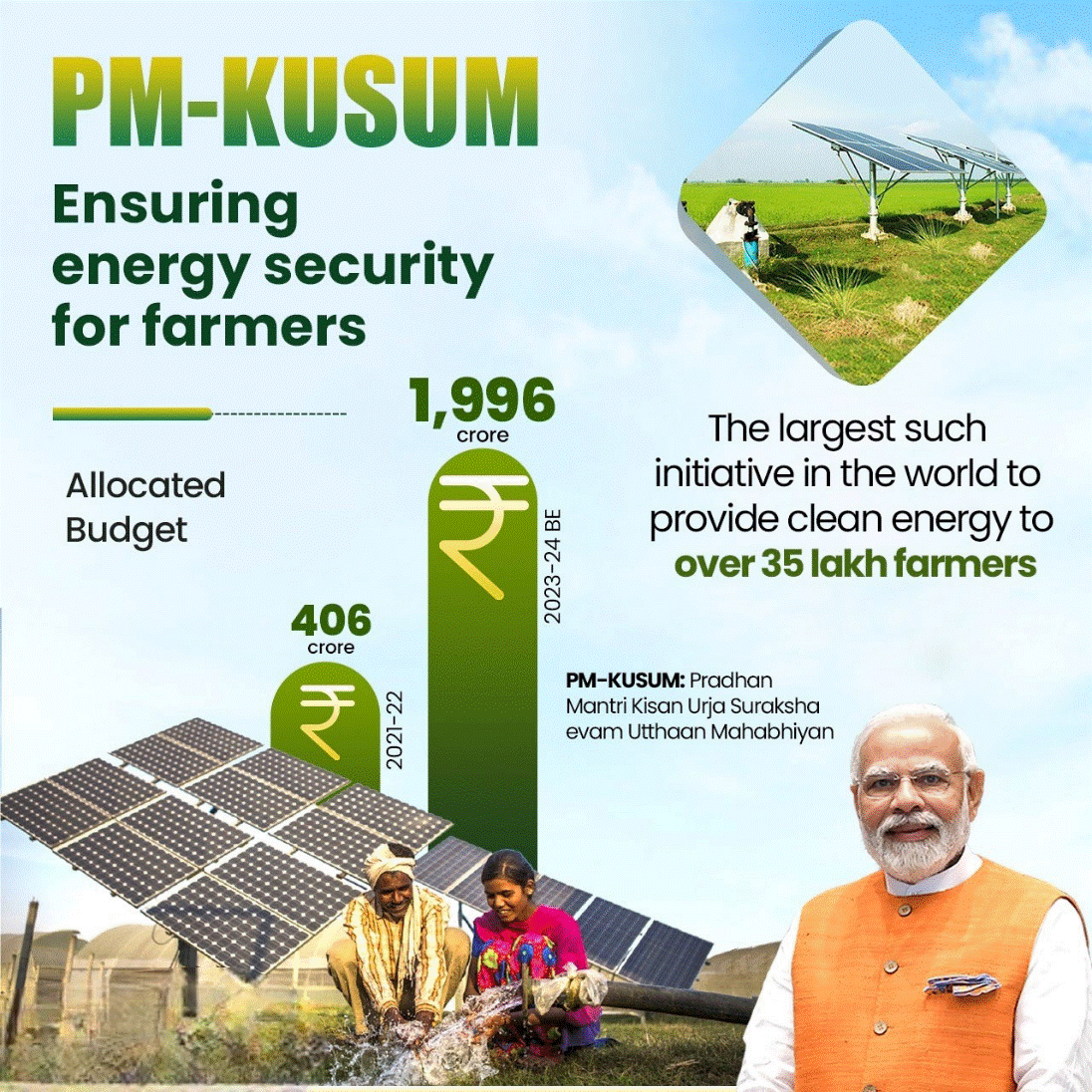
Eligibility Criteria:
- Farmers who own agricultural land are eligible to apply for the PM KUSUM scheme.
- Individual Farmers, Cooperatives, FPOs, and Panchayats are the primary groups eligible for different components of the scheme.
- The scheme is available in off-grid rural areas or areas with unreliable grid connections.
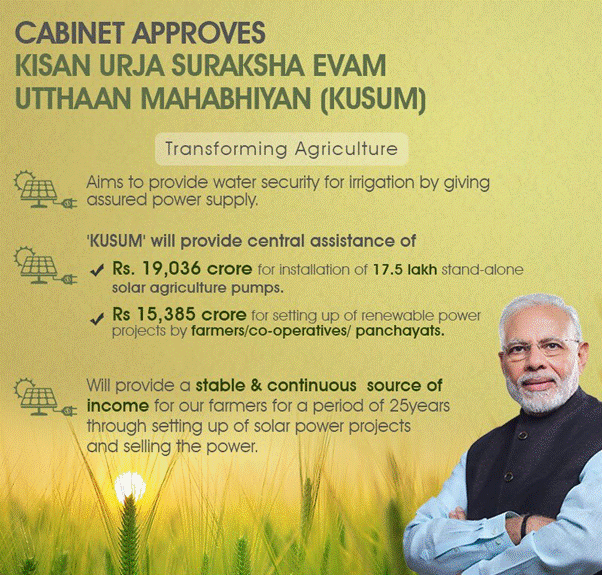
Benefits:
- Income Generation: Farmers can generate and sell solar power to the grid, providing additional income through the surplus electricity generated by solar plants.
- Reduction in Irrigation Costs: Solar pumps replace diesel pumps, saving costs on fuel for irrigation.
- Energy Security for Farmers: Access to reliable, clean, and sustainable energy for irrigation needs.
- Water Conservation: Efficient irrigation and water usage through solar-powered systems.
- Environmentally Friendly: Contribution to reducing greenhouse gas emissions and promoting renewable energy.
- Decentralized Solar Power Production: Helps reduce transmission losses, benefiting both farmers and distribution companies (DISCOMS).
- Job Creation: The installation and maintenance of solar pumps and plants are expected to create significant employment opportunities.
- Long-Term Sustainability: Farmers can use barren or fallow land for solar power generation, ensuring water and financial security in the long term.
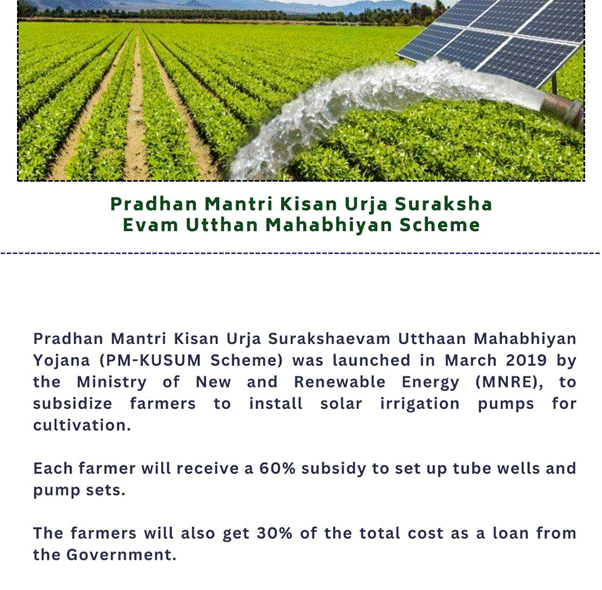
Additional Information:
Components of the Scheme:
- Component A: Installation of small solar power plants (up to 2 MW) on barren lands owned by farmers.
- Component B: Installation of standalone solar pumps (up to 7.5 HP) for individual farmers in off-grid areas.
- Component C: Solarization of 15 lakh existing grid-connected agricultural pumps.
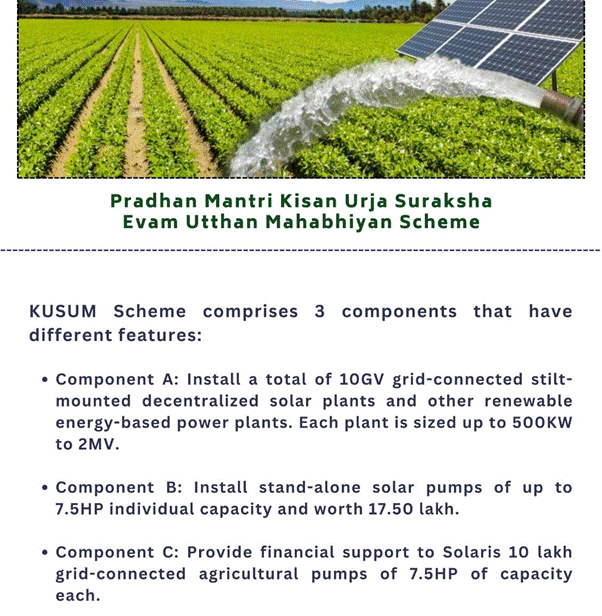
Financial Assistance:
- Farmers receive 60% subsidy for solar pumps, with 30% provided as a loan. The remaining 10% is borne by the farmers.
- The total Central Financial support for the scheme is Rs. 34,422 Crore, aimed at increasing solar capacity by 34,800 MW by 2026.
- Target: The scheme aims to provide solar pumps to 20 lakh farmers and solarize 15 lakh existing grid-connected pumps.
-------------------------------------


